International students complete Intensive Japanese Course with poster presentations
Sixteen international students representing fifteen nationalities recently completed their Intensive Japanese Course at the Institute for Liberal Arts (ILA) with poster presentations, which were held at Hisao & Hiroko Taki Plaza on July 10.
After a rigorous five-days-a-week program of language and culture study lasting four months, the students demonstrated the fruits of their efforts through Japanese presentations to Science Tokyo faculty, local elementary school students, and other audience members. Many of the students could not speak Japanese at all when they arrived in Japan in April, but over the course of four months, they had improved to the point where they could answer questions from elementary school students.
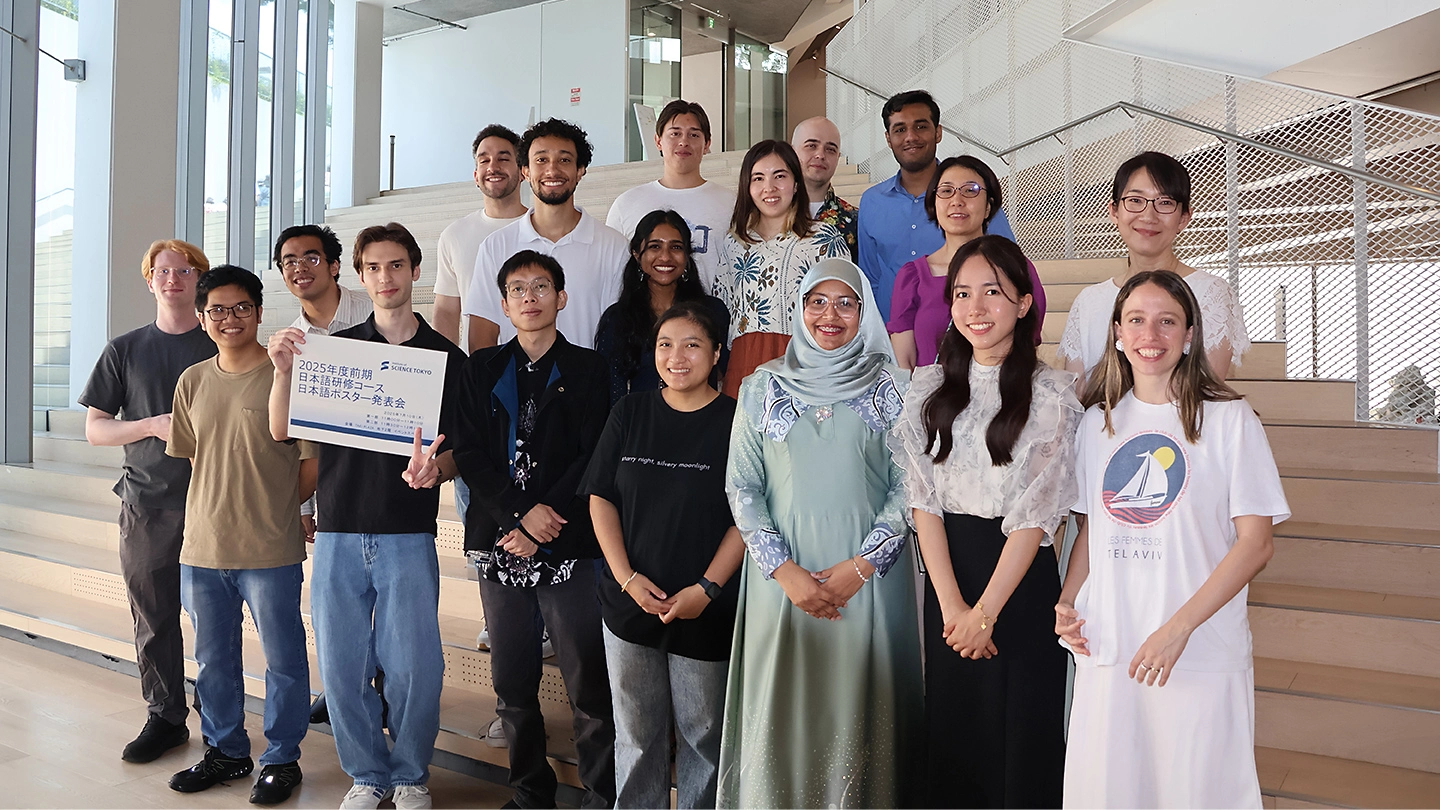
After preparing the event venue themselves, the participants spoke about various topics in relation to their home countries and regions — lifestyles, geography, nature, famous places, culture, customs, and language — while using posters as aids. They also showed the audience their native language in written form, displayed various items such as national flags, actual banknotes, and amulets, and taught elementary school students gestures common during greetings.
Approximately 170 fifth and sixth graders, and their teachers, from Senzokuike Elementary School were present at the event. Science Tokyo's international students had visited the school recently to deepen international exchanges, and the youngsters happily returned the favor. Other listeners included four members of the Kanagawa Systematized Goodwill Guide Club (KSGG), a volunteer group that guided Science Tokyo's international students around the historical city of Kamakura as part of the Intensive Japanese Course.
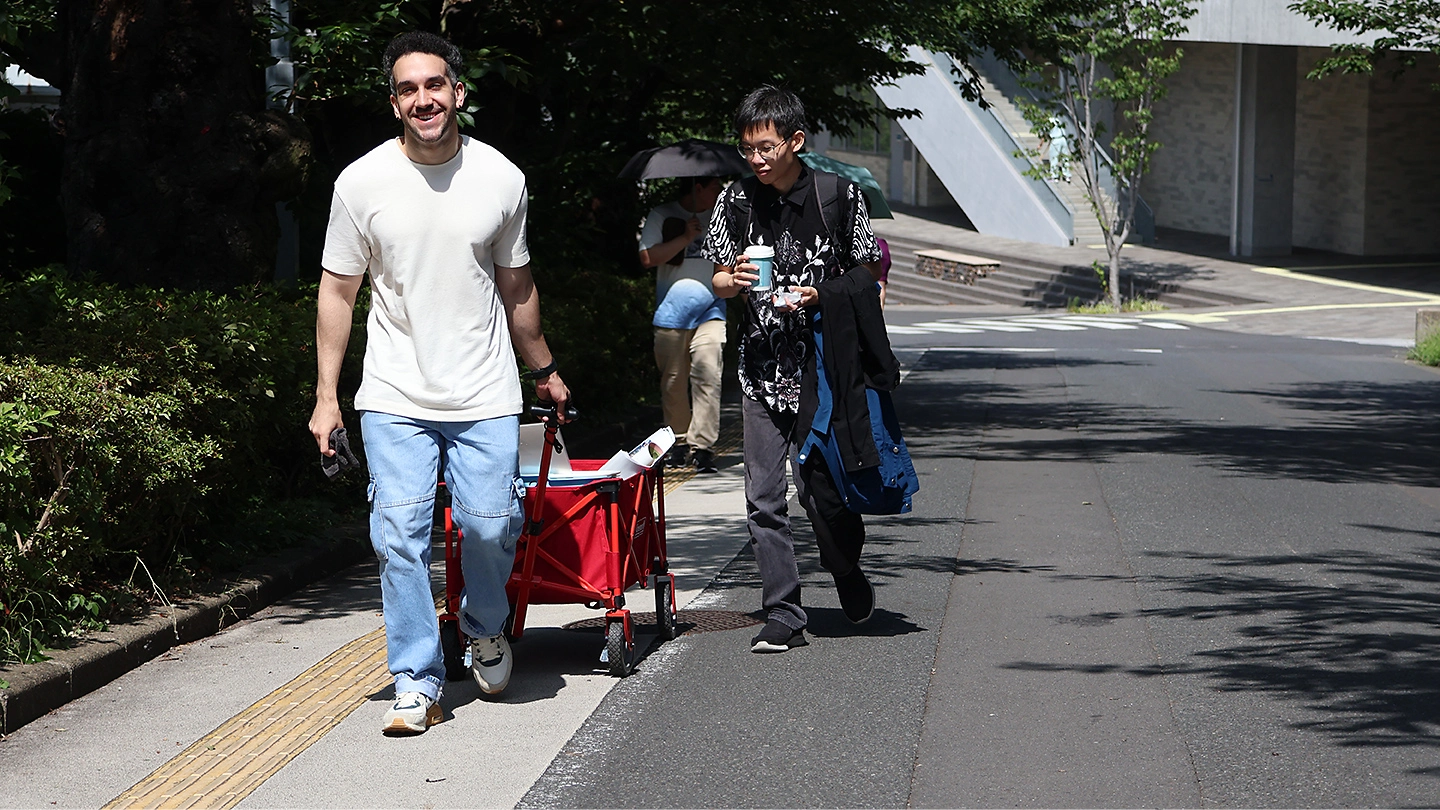
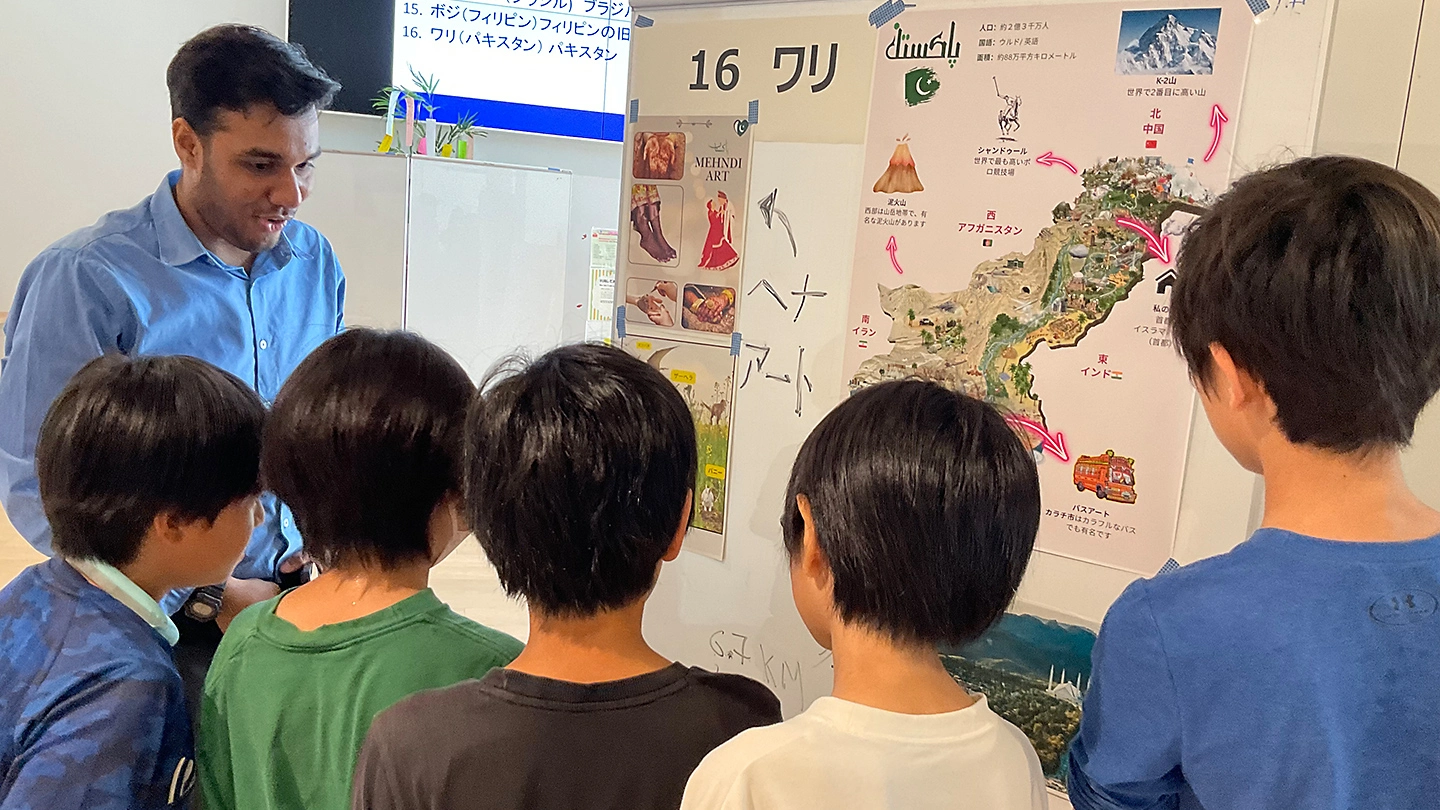

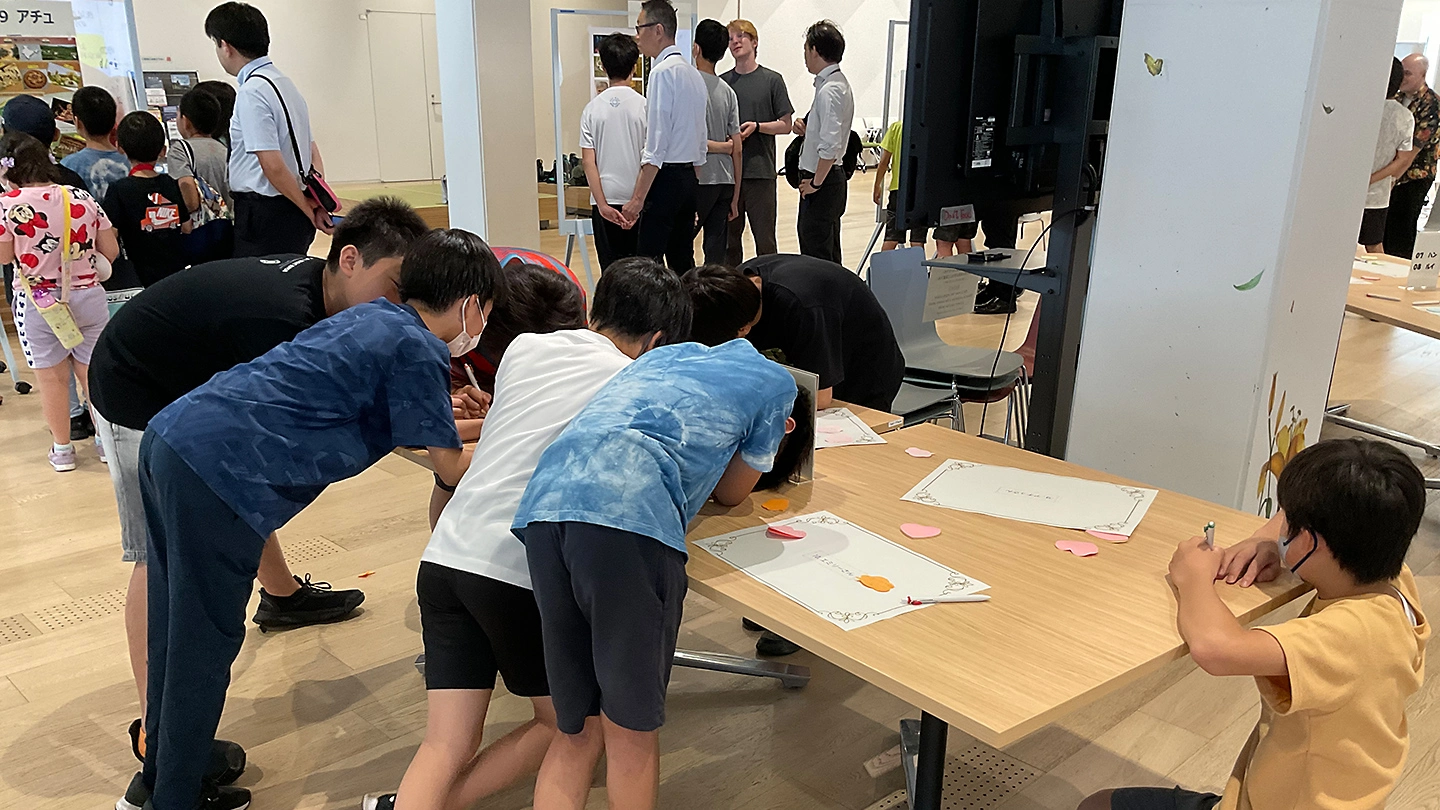
Many Science Tokyo faculty, staff, and students also tuned in to the presentations. These included Executive Vice President for Education Hidetoshi Sekiguchi, faculty members in charge of hosting international students, fellow students from laboratories, and senior international students who had previously given similar presentations.
At the end of the presentations, Ota City’s Superintendent of the Board of Education Hitoshi Oguro and Senzokuike Elementary School Principal Satoshi Ito expressed their gratitude to the international students and shared their thoughts on the event. Sekiguchi, who had offered a welcome message to the elementary school students earlier, shared some words of encouragement with the international students. A brave representative of the elementary school students also provided comments on the international students' presentations.
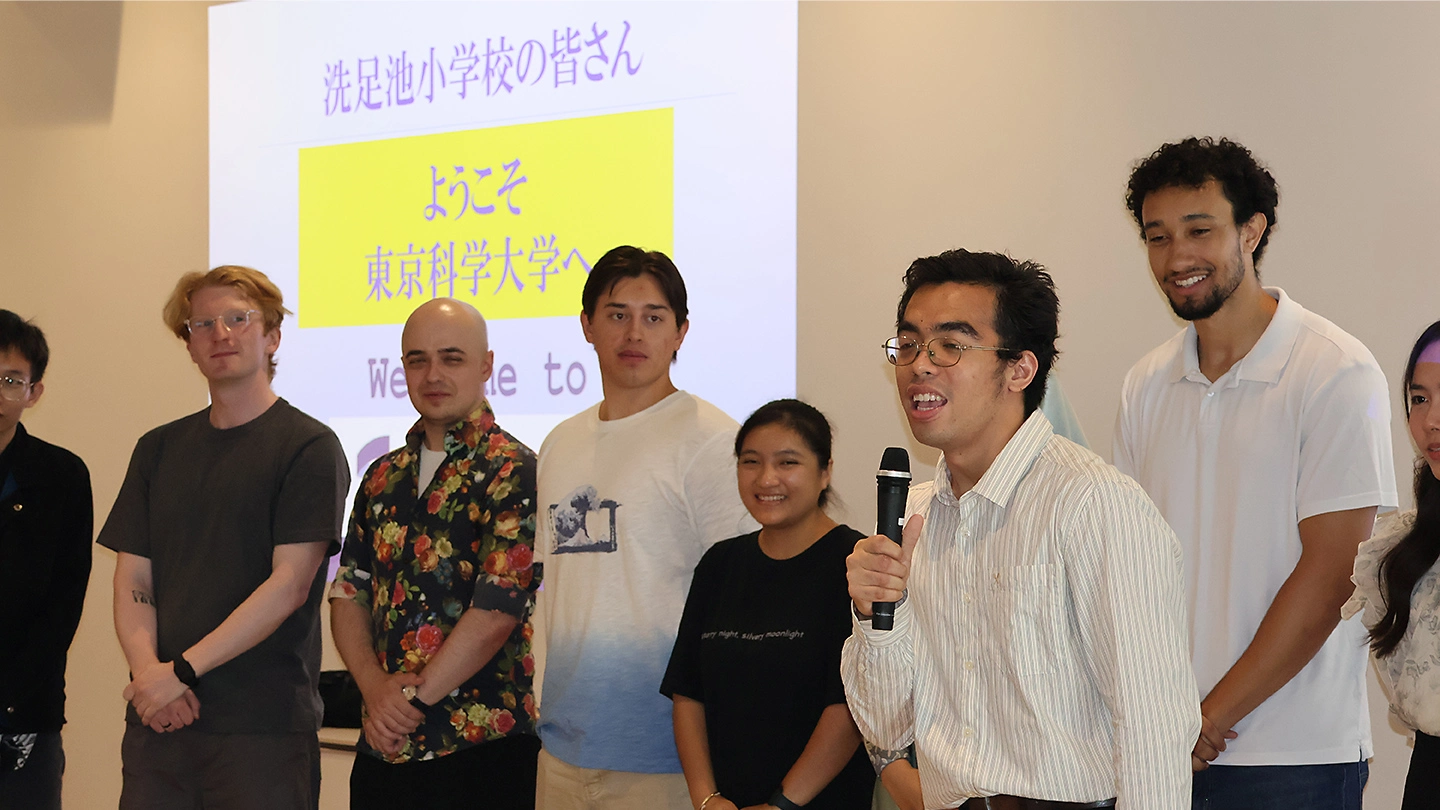
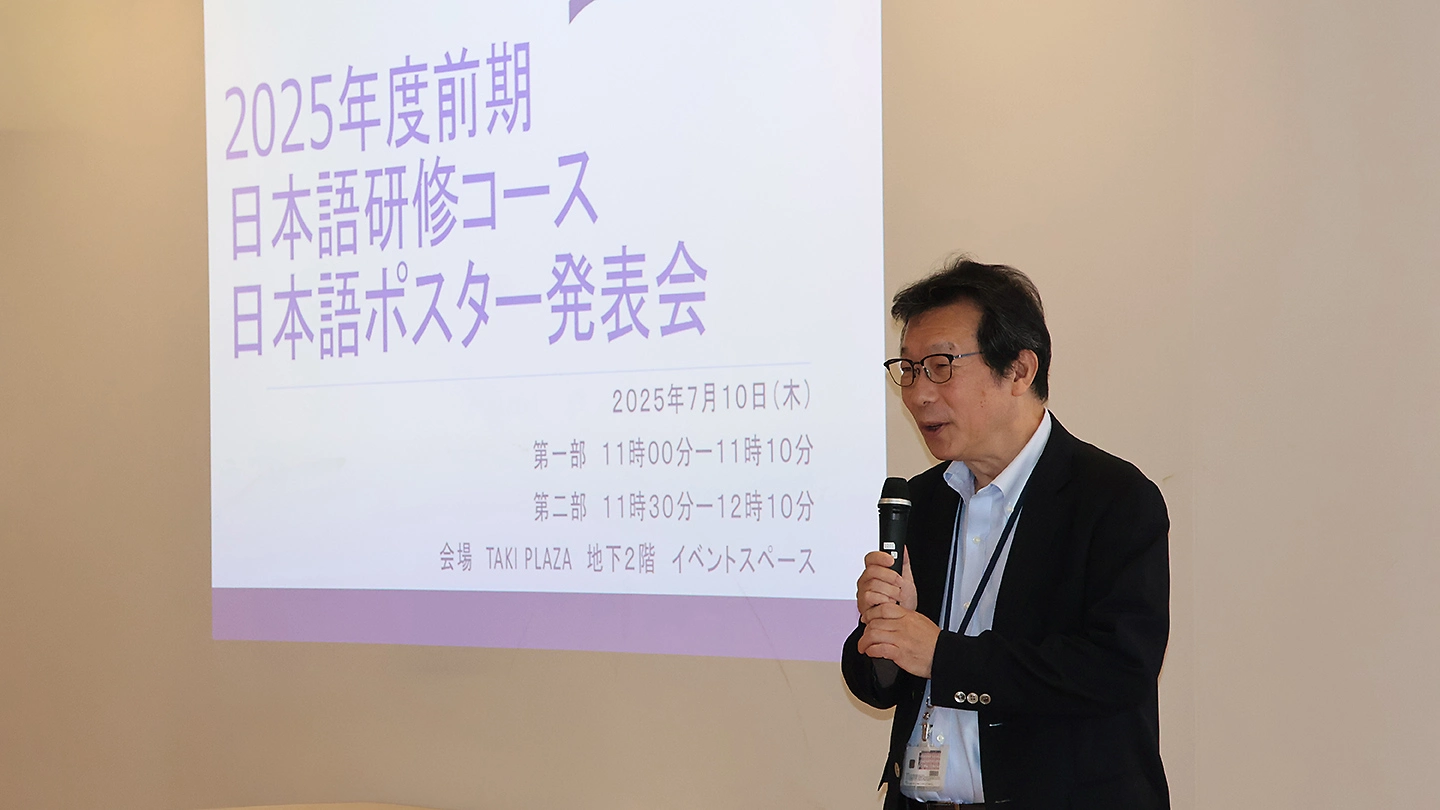
Comments from elementary school students
- I was surprised to hear that Guatemalan coffee is also served at Starbucks.
- I am glad I learned about the origins of Halloween. It was interesting to hear that it is different from Halloween in Japan.
- I will do plenty of research on British bands at home. The presentation was very easy to understand.
- The altitude of the K2 mountain peak was impressive. I would like to visit it someday.
- I learned that there are many endangered animal species in Brazil.
- The talks were all interesting and made me want to visit many places.
- I was intrigued by Bran Castle, the home of Dracula, in Romania.
- I was amazed to learn that there is a lizard called the Komodo dragon, which is about three meters long, native to a small island in Indonesia.
- It was surprising to hear that money in the Maldives is made of waterproof paper. I heard that the country has 2,000 islands, so there must be a lot of nature there.
Comments from participating international students
- A very interesting experience, I think it really helped us to express our thoughts in Japanese and figure out how to communicate our ideas effectively.
- The presentation experience was truly enjoyable and meaningful. It gave us a great chance to practice Japanese and connect with students in a fun and interactive way. I was especially happy to see how excited the students were when they could experience local things such as money, traditional jewelry, and even trying to say words in our language. It made me realize how powerful hands-on interaction can be in helping others learn about our countries and regions in a more meaningful way. Overall, it was a well-organized and valuable opportunity for which I am truly grateful.
- At the beginning, I was a bit nervous about presenting, but I started to feel more confident. Practicing many times was useful.
- The event was overwhelmingly joyful for me. I got to interact with a lot of school kids, and felt happy to educate them on my country and traditions. It was a very educational trip for the schoolchildren, and I got to practice plenty of spoken Japanese. The event encouraged me to speak freely in the future. I tried to overcome my hesitance to communicate and learned that Japanese people appreciate it when you speak their language.
- I felt more prepared and was able to speak several times with confidence. I am also very happy with how much progress we have made in Japanese — we were able to talk about our countries and regions clearly and proudly. It was a lot of fun, and I truly hope the kids enjoyed it as much as we did.
Science Tokyo’s Intensive Japanese Courses
Science Tokyo's Intensive Japanese Courses, held twice a year, are aimed mainly at Japanese government-sponsored international students looking to progress to graduate-level studies. Other students are also invited to join if capacity allows.
These courses aim to develop Japanese proficiency among beginner-level students who have just arrived in Japan. By the end of the course, each international student will have acquired sufficient language skills to make an oral presentation in basic Japanese. ILA's Japanese Section functions as "a hub for meeting and learning" for students from different cultural backgrounds, and a safe place where international students can exchange information about life in Japan.
Encounters with Japanese culture and people are important components of the courses. International students visit places such as Kamakura City, art museums in the metropolitan area, and Sona Area Tokyo, an experienced-based learning facility for disaster prevention. Intensive Japanese Course students also conduct active exchanges with elementary school students in Tokyo's Ota City.
Related articles
Contact
Japanese Section, Institute for Liberal Arts (ILA)
Email intensive-contact@js.ila.titech.ac.jp